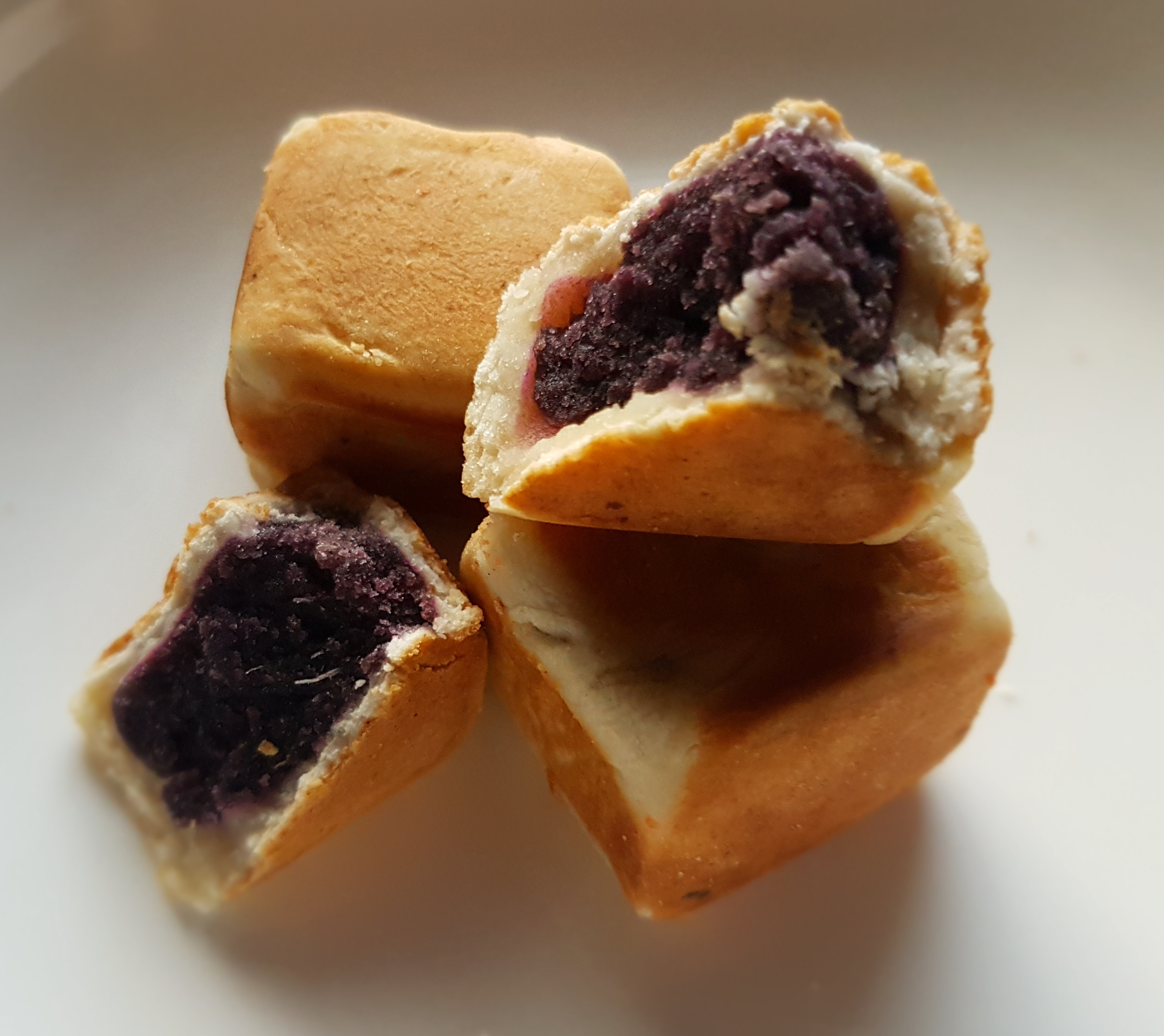It’s Mid-Autumn Festival so we’ve all been giving and receiving mooncakes – some traditional and some not too conventional. The most common mooncakes in Singapore is the Cantonese version which originated from Guangdong. The golden brown pastry traditionally encases lotus or red bean fillings, sometimes containing salted duck egg yolks. These days you’ll find a wide variety of fillings – from sesame to durian – and they also come in snowskin versions. The Cantonese also made piggy biscuits which sold alongside their fancy mooncakes.
Here are some other traditional mooncakes from around Asia that you may want to try.
Yunnan Flower Mooncake

People in Kunming (Yunnan) celebrate Mid-Autumn Festival with the flower mooncake. The xianhua bi (鲜花饼) is a flat, round pastry filled with roses! Yunnan is famous for its edible roses, and the mooncake is said to be fragrant, sweet, and slightly tangy. These mooncakes are believed to be “good for improving feminine beauty”.
Another Yunnan mooncake is filled with ham since its climate is also suitable for curing hams. These 云腿月饼 (yuntui yuebing, or cloud ham mooncake), contain sweetened ham encased in a thick crust. It can be either oily or a bit dry.
Hainanese Salt and Pepper Mooncake

Many regions in China have their own versions of mooncakes, but the Hainanese Salt and Pepper Mooncakes (酥盐饼, or su yan bing) doesn’t exist in China. Much like Hainanese Chicken Rice, it’s actually created right here in Singapore’s Hainanese quarter (around Purvis Street) in the 1920s.
The Hainanese mooncake is full of different flavours, ranging from sweet to tangy, savoury, and slightly spicy. The fillings include sesame seeds, melon seeds, dried tangerine peel, and even fried onions, encased in a skin that’s coated in lard.
Hokkien Mooncake (Scholar Cake)

The Hokkien mooncake is as much a symbol of good luck for those taking exams as it is for appreciating the full moon. Traditionally, these cakes were given to scholars who sat for Imperial exams in ancient China, hence their nickname “scholar cakes”. The best performing scholar would receive the biggest cake.
This flat, round cake has a sweet filling of candied wintermelon, melon seeds, and tangerine peel, wrapped in glutinous rice flour coated in lard. There’s usually a large, red stamp on top of the cake, with the base and sides sometimes coated in sesame.
Beijing Zilaihong Mooncake
Beijing has a number of mooncakes, but the most popular is the red mooncake (自来红月饼, zilaihong yuebing). It’s filled with brown sugar, Osmanthus blossoms, fruit shreds, nuts, seeds, and dried orange peel.
Fanmao mooncake (翻毛月饼, flipping feather mooncake) is also popular, which is made of five nuts or hawthorn fruit, walnuts, pine nuts, pumpkin seeds, orange peels, raising and/or sugared rose petals.
Teochew Mooncake

Unlike other mooncakes, the Teochew version has a flaky pastry that’s shaped more like a spiral dome. It’s also got a yam or taro filling. Known as la bia – la means lard, which is used for the pastry – in the Chaoshan region (east of Guangdong where Teochews are from). The mooncakes can also be filled with lotus seed and mung bean pastes.
Suzhou Mooncake

Smaller than other mooncakes, they have a flaky layered dough and are made with a lot of sugar and lard, with a minced pork filling. While it’s a ‘mooncake’, this delicacy is served hot all year round like a regular snack in Suzhou.
Shanghai Mooncake

The Shanghai mooncake is typically encased in a rich, buttery, and crumbly crust and are stuffed with pastes like lotus seed, taro, sweetened red bean paste – occasionally with egg yolks.
The mooncake’s crust, which is shaped more like an undecorated round bun than a fancy Cantonese mooncake, tastes somewhat like kaya toast.
Mooncakes around Asia
The Mid Autumn Festival is celebrated with mooncakes across Asia too. In Vietnam, you can find a variety of mooncakes (bánh nướng) that can be either sweet or savoury, stuffed with ingredients like lotus, mung bean, coconut, meat, and are either square or circular which can come in baked or glutinous (sticky) crusts.

In Japan, you’ll find the familiar-looking mooncake – called geppei (月餅) – which is normally sold all year round, mainly in Japan’s Chinatowns. The Philippines and Indonesia have a simplified mooncake called hopia (meaning “good cakes”), which is a snack that’s available year-round.
Mid-Autumn Festival in Korea is called Chuseok, which is celebrated by eating songpyeon (송편), a traditional Korean steamed rice cake stuffed with sweet fillings like sesame seeds, cinnamon, jujube, honey, black beans, and mung beans. The rice skin resembles the shape of a full moon but once it is stuffed, the shape resembles a half-moon.












